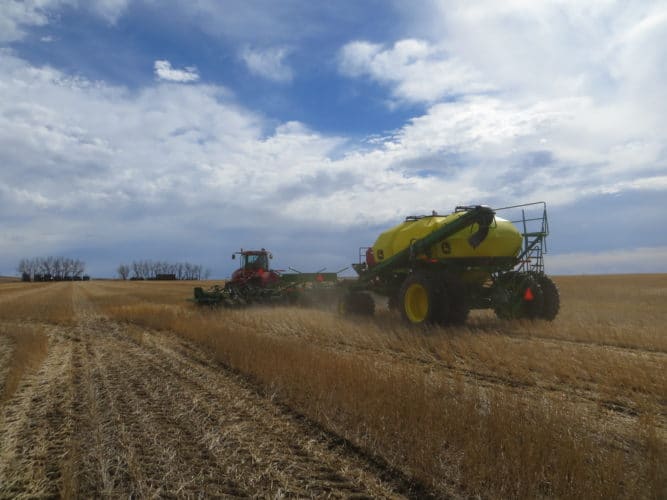Spring has sprung and planting is in full swing. The snowstorms and rain events in the past weeks brought some much-needed moisture to the state. But the newly received soil moisture in combination with still cool soil temperatures create prime conditions for seed and seedling rot caused by Pythium, warns MSU Extension. Pulse crops in particular are at high risk
What is Pythium rot?
Pythium is a soilborne water mold (Oomycete) that causes seed rot and pre and post-emergence damping-off on a wide range of host plants. The pathogen is favored by high soil moisture and low to moderate soil temperatures (50 to 75 F). The risk of seedling damping-off is especially high when soils are saturated for one or more days after planting and before emergence. Low-lying areas in the field, where water accumulates, are likely disease hot spots. High residue cover, that keeps soil temperatures cool, also favors the disease.
Poor stand establishment and yellow seedlings are initial indicators of seedling damping-off. These symptoms often occur in circular patches in the field and may be more noticeable in low-lying areas. The root system of affected seedlings is poorly developed with a lack of fine root hairs. Roots often show brown discoloration and have a gelatinous texture. The root cortex (outer layer of the root) can easily be stripped away, exposing the root core.
Pythium has a wide host range, including small grain crops, alfalfa, and many weed species. Pulse crops are very sensitive to seed, seedling, and root rot diseases caused by this pathogen. Pythium is the most frequently reported cause of seed and seedling rot in peas. Kabuli-type chickpeas are much more susceptible than the Desi-type. Low-tannin cultivars of lentil with light-colored seeds are more susceptible than dark-colored seed cultivars.
How can I manage Pythium root rot?
Fungicide seed treatments are strongly recommended for pulse crops. Choose a seed treatment product with mixed modes of action to achieve broad-spectrum protection against a variety of soilborne seed and seedling pathogens. Fungicides active ingredients with efficacy against Pythium (Oomycete, not a true fungus) include Metalaxyl, Mefenoxam, and Ethaboxam. At least one of these active ingredients should be included in your fungicide treatment to provide protection against Pythium.
VibranceMaxx Pulses is one suitable product with efficacy against Pythium and other seed- and soilborne diseases. The Fungicide Seed Treatment Table for Pulse Crops for the 2022 growing season provides an overview of suitable seed treatment options. You may also refer to the North Dakota Field Crop Plant Disease Management Guide for seed treatment options in pulses and other crops.
Delay seeding dates of highly susceptible crops and cultivars, especially if fungicide seed treatments are not a management option for you. This concerns especially Kabuli-type chickpeas which are highly susceptible to Pythium seed and seedling rot. Delay seeding until soil temperatures have increase above 50 F.
Plant disease-free seed with maximum vigor to ensure rapid germination and emergence. This will reduce the window of susceptibility for infection, because older seedlings are less susceptible to Pythium (lignification of the root system provides a physical barrier to infection).
Producers with questions can email or call Uta McKelvy, MSU Extension Field Crop Pathologist at uta.mckelvy@montana.edu or 406-994-557.


